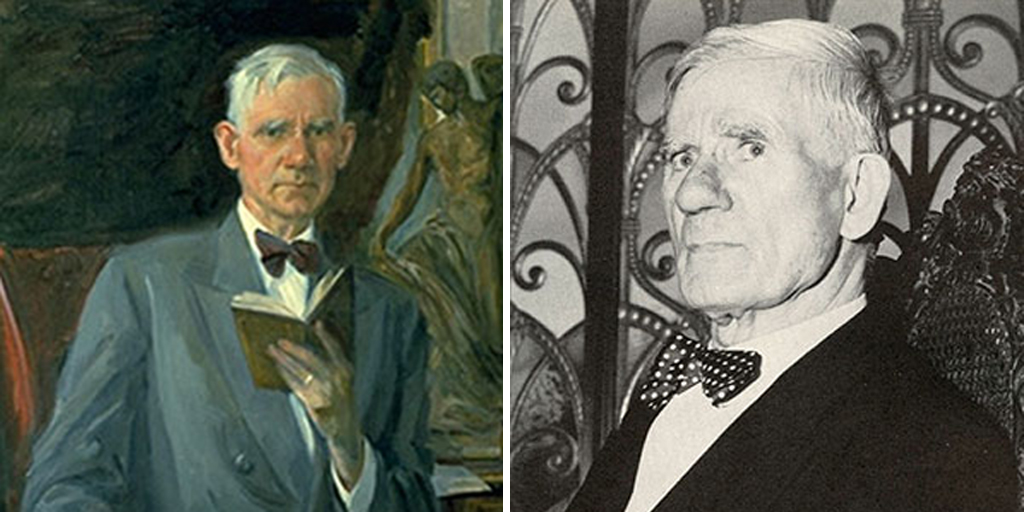Who was Dr. A.J. Armstrong?

Every Bear who’s stepped foot on the Baylor campus knows the beauty of Baylor’s Armstrong Browning Library. It’s home to the largest collection of the works of Victorian poets Robert and Elizabeth Barrett Browning, is repeatedly named one of the most beautiful libraries in America, and has long been a popular wedding venue on the Baylor campus.
You probably know that the “Browning” in Armstrong Browning Library comes from the poets — but what about “Armstrong”? That name comes from Dr. Andrew Joseph “A.J.” Armstrong and his wife Mary Maxwell Armstrong, who spent the second half of their lives collecting the poets’ works, raising funds from around the world to build a library to house them, and caring for the library.
Born on March 29, 1873, in Louisville, Ky., Armstrong was a precocious, sensitive and serious child who was very close to his mother. Armstrong didn’t begin college until age 26, after both is parents had passed, at which point he enrolled at Wabash College in Crawfordsville, Ind.; he eventually earned both his undergraduate and graduate degrees from Wabash.
Armstrong began his career in higher ed as a professor at the now-defunct East Texas Baptist Institute in Rusk, Texas. It was there that he met his future wife, fellow English professor Mary Maxwell, as well as Samuel Palmer Brooks, then the brand-new president of Baylor University. Armstrong didn’t know it then, but it was these meetings that would eventually lead to the creation of the Armstrong Browning Library at Baylor.
Armstrong’s love for the Brownings began at Illinois Wesleyan University, where he was to teach a course on Robert Browning’s works. Armstrong had never before studied the poet, but not one to give any task less than his best, he studied Browning’s writings every day from 1 p.m. to 2 a.m., breaking only for an hour to eat dinner. He wrote that he “was ripe for the reception of [Browning’s] philosophy, to appreciate his beauty.” By 1905, Armstrong had begun his own small “Browning library.”
In 1908, Armstrong was recruited by Brooks to fill a one-year interim position as chair of Baylor’s English department. At the end of his first year at Baylor, he took a three-month trip around Europe and married Mary Maxwell. It was on that trip where he met and became friends with Robert Barrett “Pen” Browning — the only son of Robert and Elizabeth Barrett Browning — who showed him various aspects of his parents’ home and belongings. After Pen’s death in 1912, many of the Brownings’ items were sold off; Armstrong obtained a list of who the items were sold to and began to acquire them via donation or purchase, hoping to preserve their works somehow. That same year, Armstrong saw an opportunity when he was offered a full-time position as chair of Baylor’s English department.
He donated his personal collection of Browning texts and commentaries to the university, and traveled the globe in search of all the Browning art, artifacts, letters and manuscripts he could find. By 1925, Baylor’s Browning collection was clearly the largest single concentration in the world — and clearly needed its own building. So, the Armstrongs began fundraising. Armstrong became known for constantly cajoling, challenging and besieging donors and former students for gifts large and small.
In 1943, when Armstrong was 70 years old, Baylor President Pat Neff offered $100,000 toward the library and challenged Armstrong to raise the remaining funds. Despite a post-war economy and the challenges of old age, Armstrong did just that. Five years later, on May 7, 1948, a groundbreaking ceremony for the $1.75 million, three-story Armstrong Browning Library was held.
While the library building was under construction and as Armstrong’s health deteriorated, it became Mary Armstrong’s role to consult with the architects, designers, builders, and stained glass experts and to make major decisions of practical and aesthetic significance. You can see her taste in the details of colors, symbols, lighting, decoration, furnishings, and themes in the library. Finally, three and a half years after the groundbreaking ceremony, work on the library was completed, and it was filled with precious Browning memorabilia. Armstrong passed away in 1954, just three years after his dream came into fruition.
By the end of his days, Armstrong had become famous among Baylor students for inspirational quick quips, such as “Don’t be colorless; be somebody!”; “No man should attain his ideal — it should be his starting point for tomorrow”; and the mantra, “I can’t do much, but the most I can do is the least I should attempt.” Such words are particularly apt, coming from a man who left such a lasting legacy here at Baylor.
Sic ’em, A.J. Armstrong!
[Note: This post could not have been written without the help of the 2014 biography, Boundless Life: A Biography of Andrew Joseph Armstrong, written by Robert Browning scholar Scott Lewis, BA ’84. The book is available for purchase on Amazon should you like to learn even more about the man behind the building.]
You might also like:
* Happy 65th anniversary, Armstrong Browning Library! (Dec. 2016)
* Armstrong Browning director retires after 50 years with Baylor (Sept. 2016)
* Baylor named among nation’s best collegiate libraries (July 2013)

